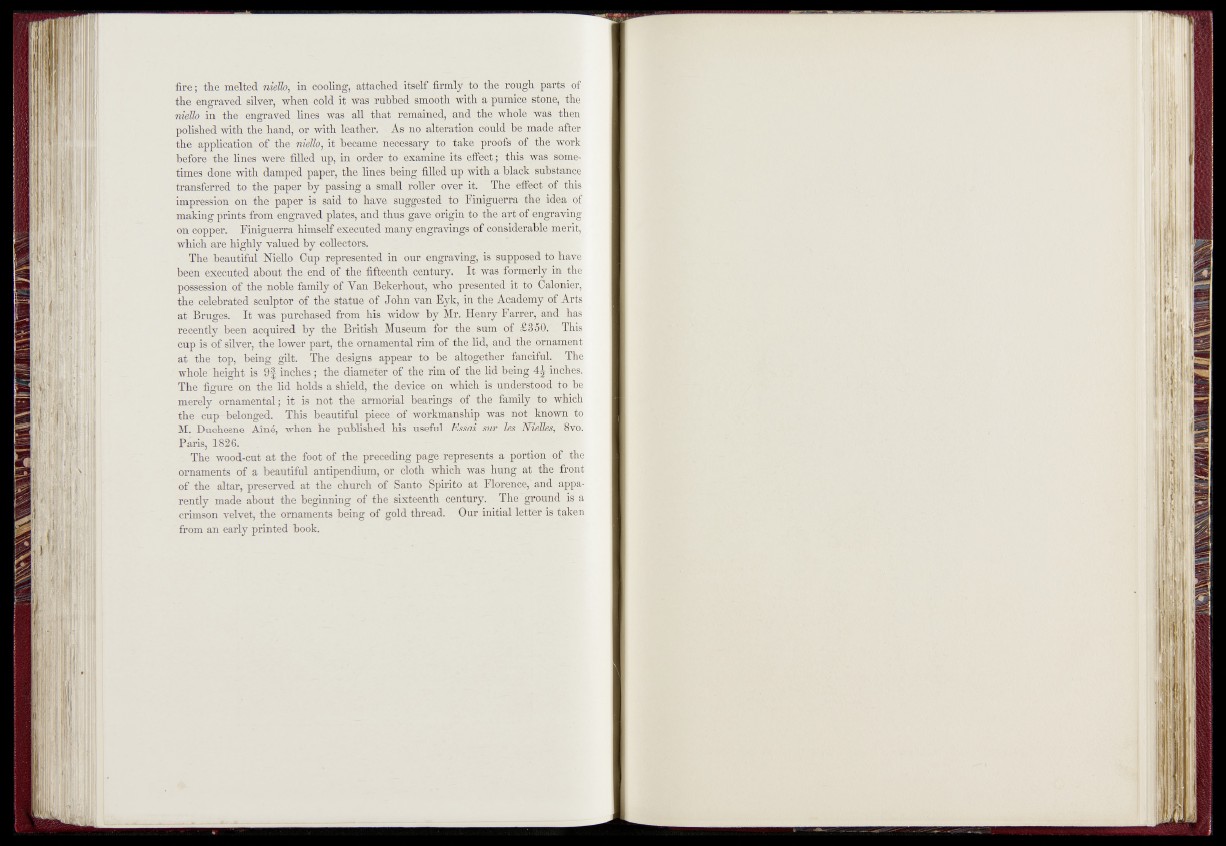
fire; the melted niello, in cooling, attached ifeèh* firmly td the róiig^. 'parts of
the engraved silver, when cold it was rubbed smooth with a pumice J|^enRfe
niello in the engraved lines was all that remained, and^the )ÿJiq1ç\ wü&ïjfen
polished with the hand, or with le ath e r.A s no alteration could b$0 ^de after
thé application of the niello, it became necessary W take proofs of ..fne work
before the lines were filled up, in order to examine its gffèöt ; this was^pme-
times dbne with damped paper, the lines being filled up with!hlack fm R Éuce
transferred to.’.the paper by passing a small roller over i t The
impression on the" paper is said to have suggested tu Tiniguérratthgiidea of
making prints from engraved plates, and thus gave origin to the art of engraving
on copper. Finiguerra himself executed many engravings of considerable§pierifc,
which are highly valued by" collectors.
The beautiful Niello.. Cup represented" in our engraving, is-nupposed tdhave
been^ executed about the. end óf the fifteenth century. It was fo r^ rly in ran
possession of the noble family of Yan Bekerhout, who presented4, i t 'to^^lónier,
the celebrated sculptor-of the statue of John van-Eyk, in- the- Academy fmjjærts
at Bruges*. It was purchased from his widow by Mr. Henry 3 ^ ^ * , ‘"and gas
recently been acquired by the British^ Museum for the, sum
cup is of silver, the lower part, the ornamental rim of the lid,- and the .ornament
at the top,:. being gilt. The designs- appear to be altogether 'fanciful. ; The
' whole'height is 9| inches; the diameter of the rim-of the hdbéïgig;4^|||fh es.
The figure on the lid holds a shield, the device on which is understood TOEgbe
merely ornamental; it is not the armorial bearings:, of the - ‘famSy fdô^^mçh
the-cup-belonged. This beautiful piece of workmanship was n|>|| known" to
M, Duchesne Aîné, «dien he .'published .his useful Essai sy/r le s -^ ^ s ^ m o .
Paris, 1826. _ ' - • - . -
The wood-cut at the foot of the preceding page represents a^p^ ioif of l e
ornaments of a beautiful antipendium, or doth which was hung, at the. front
of the altar, preserved at the church of Santo Spmto at pl&rijnce'and, Apparently
made about the beginning of the sixteenth century, i l l ' ground gfi a
crimson velvet, the ornaments being of gold thread. Our initial letter lekken
from an early printed book.